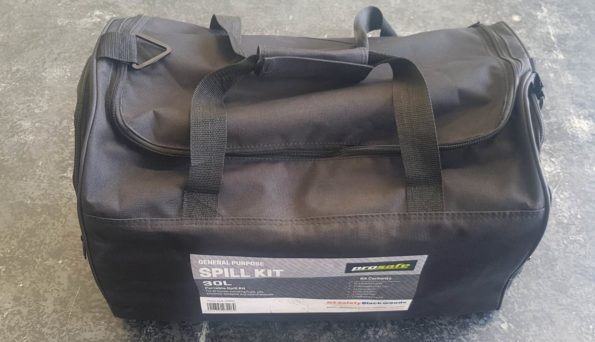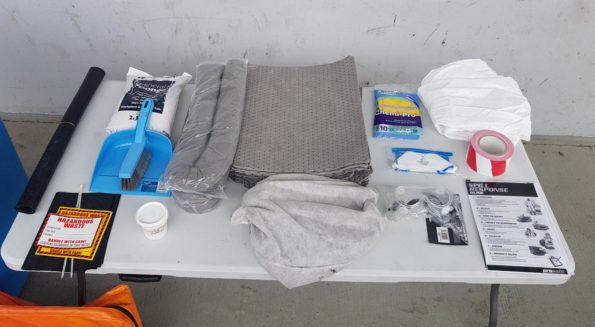Some drivers carry liquids that are hazardous or dangerous. If there’s a spill, they must be able to contain and/or clean up the spill to prevent them entering into the soil, groundwater or drains. This is done using a spill kit which the driver carries in the cab or in the toolbox of the trailer.

Spill kits for vehicles come in three main varieties: general purpose, oil and fuel, and hazardous chemicals. There are other spill kits for biohazards and medical purposes. Spill kits can be purchased from a variety of stores and websites and come in either a bag or a small plastic crate. This bag or crate should be secured so that it’s not damaged in transit and it doesn’t pose a hazard to the driver or passengers.
What’s in a spill kit?
Spill kit contents have to perform three functions:
- Protect the user by providing appropriate PPE (personal protective equipment), such as gloves, goggles and overalls
- Absorb or prevent the spilled materials from spreading
- Safely contain and dispose of the materials
Standard contents
Content vary slightly depending on the type of kit it is, for example and oil and fuel spill kit will contain items specifically designed to absorb or contain those materials. The absolute bare minimum most spill kits contain is:
- Instructions on a laminated sheet.
- Rubber gloves and plastic eye protection
- Absorbent pads
- Absorbent socks
- Loose, granular absorbent
- Plastic bag and cable tie for disposal
The amount of absorbent materials depends on the size of the spill kit, which is usually given in litres. Most vehicle-based spill kits are for spills of up to 20-40 litres.
In the case of a larger spill, call a specialist clean-up team.
Additional contents
More expensive, larger or specialist spill kits could also contain:
- Coveralls, overalls or a full body suit
- Respirator or face mask
- Boots or shoe covers
- Dustpan and brush, or a larger brush and shovel, depending on the size of the kit
- Neutralising chemicals for acids or alkalis
- Degreasers
- Drain cover
- Putty for plugging holes
- Cones, warning signs, danger tape or barriers
- Hazard warning labels (either a generic label or dangerous goods placards)
- Booms

Who is responsible when there’s a spill from a vehicle?
The driver has responsibility for any hazardous chemicals spilled from the vehicle, unless as a result of a collision that’s another driver’s fault. However, the driver must do what’s possible to mitigate the spill.
A driver could be fined for allowing toxic chemicals to enter waterways or groundwater, or if they injure bystanders.
Spills can happen when packaging fails or is damaged. This can be caused by a fault in the packaging, or failure to secure a load correctly (meaning it moves around). Spill can happen from the vehicle if a fuel tank is overfilled or if there’s an engine component failure (e.g. hose bursts).
Do you need a spill kit when driving?
If you are transporting containers of dangerous liquid, or you are using dangerous liquids as part of your job, carrying a spill kit is a good idea to reduce risks.
